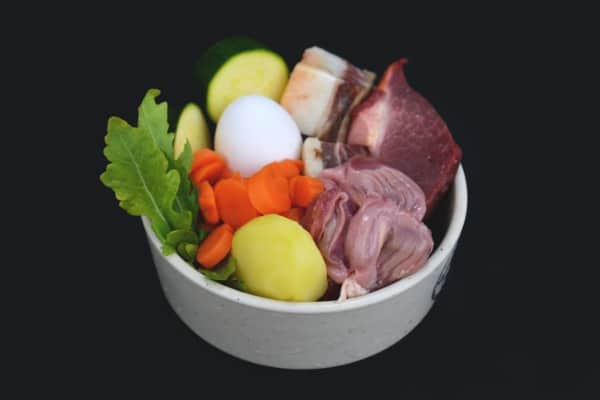
As a dog owner, you are obviously concerned about the quality of the dog food you feed your pet.
With so many options to choose from in the stores, it can be rather difficult to find the best blend for your dog.
You’re not alone.
Homemade dog food is something that is on the rise. When you purchase the ingredients for dog food yourself you’ll know exactly what your pet will be eating.
Additionally, your dog may need a special diet due to a condition or disease. Homemade dog food can easily address these issues.
If you are a beginner, you may not know where to turn.
To start, talk with your vet before you make the change to homemade meals for your dog. When you are ready to jump in, check out the following tips.
How much should my dog eat?
The first step to cooking homemade meals is knowing how much your pet needs to eat every day.
Typically, your dog should consume around 2 to 3 percent of their body weight in food.
For example, a 100-pound dog should have about 30 ounces of food a day.
This amount may be adjusted depending on your pet, especially if they are under or overweight.
Using the right meat in your food
Putting together your own homemade dog food means making sure there is enough fat in the meat you use. More fat means higher calories.
In order to make your base fatty, use meat that is 90 percent leaner or even higher.
Chicken and pork products are also good choices. Organic meat is the best choice overall, as the meat will be free of harmful hormones.
Avoid highly-processed meats, such as hot dogs.
Organ meat is another inexpensive way to add more to your dog’s food.
Organ meat has minerals, vitamins, and enzymes that are not typically found in muscle meat.
You can add the following organ meat to your dog’s meals: heart, kidneys, liver, pancreas, and gizzards.
Using the right amount of vegetables
Vegetables are the next addition to your homemade dog food.
You can include the following vegetables into the mix: beets, broccoli, carrots, cauliflower, green beans, pumpkin, peas, sweet potato, squash, yams, and zucchini.
Avoid these vegetables: tomatoes, spinach, onion, raw beans, and bell peppers.
You can use fresh or frozen vegetables in your mixture.

Other ingredients you can use
Eggs are a great source of healthy fat and protein, as well as many fat-soluble vitamins such as A, D, E, and K.
You can add eggs to your homemade dog mixture, cooked or raw. Another great ingredient is sardines, as they provide plenty of omega 3 fatty acids.
They are also relatively inexpensive and will make a good addition to meals a couple of times a week.
Add also calcium-rich foods to your pet’s diet to avoid osteoporosis.
Trace minerals like mussels or kelp powder is a good supplement as well.
Kelp powder can be found in the dietary section of many stores or online, while mussels are located in the seafood section.
Going organic
Perceived as another healthier alternative to conventionally processed dog food, is adding an organic diet.
Organic dog food improves the quality of life, ensures optimum health and longer life expectancy for your fur baby.
Going organic means giving your pet more nutritional value like antioxidants, phosphorous and omega-3 fatty acids.
If you can’t get all organic ingredients for your pup, you can look for high quality, human-grade dog foods that are available in the market or follow this link where you can buy and get guides for organic dog foods. https://www.thepamperedpup.com/best-organic-dog-food-reviews/
One common mistake made by pet owners who want to make their own dog food is giving their pet the same recipe every day.
Change up what you include to make sure they are getting as balanced of a meal as possible.
